
ACT Science Practice Test 3
Đề thi nằm trong bộ sưu tập: Tuyển Tập Bộ Đề Thi Đại Học Hoa Kỳ (ACT) - Có Đáp Án Chi Tiết
Số câu hỏi: 24 câuSố mã đề: 1 đềThời gian: 1 giờ
219,516 lượt xem 16,876 lượt làm bài
Xem trước nội dung:
Organic compounds are molecules that frequently contain carbon (C), hydrogen (H), and oxygen (O) joined together by covalent bonds (symbolized by straight lines in chemical notation). As the number of bonds to oxygen atoms increases in a carbon chain, the overall molecule is increasingly oxidized. For example, aldehydes are more oxidized than alcohols, which are more oxidized than alkanes as shown in Table 1. The melting points of these compounds are listed in Table 2, and their viscosities (resistance to flow, or "stickiness,") are listed in Table 3.
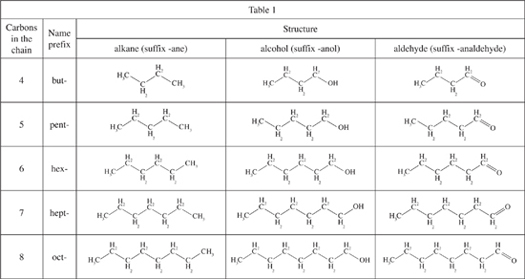
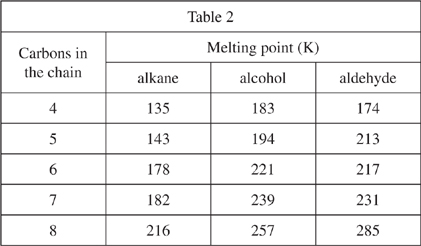
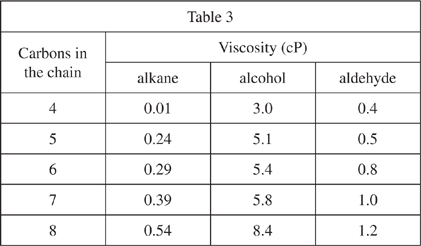
Which organic compounds in
Table 2 are solids at 215 K?
All alkanes, alcohols, and aldehydes with 5 carbons or fewer.
Alcohols and aldehydes with 6 or more carbons and octane.
The 4- and 5-carbon alcohols and aldehydes, and all alkanes with 7 or fewer carbons.
The 5-carbon pentane and pentanol compounds and the 4-carbon butane, butanol, and butanaldehyde.
According to
Tables 1 and
3, which organic compound has the highest viscosity?
Octanol
Octanaldehyde
Hexanol
Butane
According to
Table 3, how do the different types of 5-carbon molecules differ with respect to their viscosity?
The alkane has a higher viscosity than the aldehyde and the aldehyde has a higher viscosity than the alcohol.
The alkane has a higher viscosity than the alcohol and the alcohol has a higher viscosity than the aldehyde.
The alcohol has a higher viscosity than the alkane and the alkane has a higher viscosity than the aldehyde.
The alcohol has a higher viscosity than the aldehyde and the aldehyde has a higher viscosity than the alkane.
For each type of organic compound, what is the relationship between the length of the carbon chain to the melting point and viscosity? As the number of carbons in the chain increases, the melting point:
decreases and the viscosity decreases.
increases and the viscosity increases.
increases but the viscosity decreases.
decreases but the viscosity increases.
According to
Table 2, the difference in melting point between an alkane and an alcohol with the same number of carbons is approximately how much?
25 K
35 K
45 K
65 K
A mass suspended by a lightweight thread and swinging back and forth approximates the motion of a simple gravity pendulum, a system in which gravity is the only force acting on the mass, causing an acceleration of 9.8 m/sec2. The time to complete one cycle of swinging back and forth is the period and is inversely related to gravitational acceleration.
Using the same type and length of thread, 2 cubes were suspended, lifted to the same starting angle, and let go. The amount of time required for each pendulum to complete one swinging cycle (1 period) was recorded with a timer capable of reading to the nearest 0.01 sec. The measured times were used to calculate acceleration.
Experiment 1
A cube of lead (11.3 grams) and a cube of tin (7.4 grams) were suspended from a 0.5 m length of thread. Both cubes had the same length. (Note: A cube's volume is proportional to its length cubed; its surface area is proportional to its length squared.) The cubes were set in motion from a fixed starting angle, and the period for each was recorded.
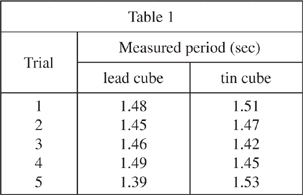
The average periods were 1.46 sec and 1.48 sec for the lead and tin cubes, respectively. The average accelerations were 9.3 m/sec2 for lead and 9.1 m/sec2 for tin.
Experiment 2
The same procedures used in Experiment 1 were repeated using a thread length of 1.0 m and the same fixed starting angle. Results were recorded in Table 2.

The average periods were 2.06 sec and 2.09 sec for the lead and tin cubes, respectively. The average accelerations were 9.3 m/sec2 for lead and 9.0 m/sec2 for tin.
Experiment 3
Given the results of the first 2 experiments, the accuracy of the timer was tested. The procedures of Experiment 1 were repeated using only the lead cube. The trials were recorded on digital video at 100 frames per second. The video was then reviewed to obtain precise measurements of the period for each trial and results are shown in Table 3.

The average period recorded in Table 3 was 1.47 sec.
To demonstrate that a pendulum’s acceleration is reduced by drag force from air resistance, which additional experiment can be performed in addition to those in the passage?
The cubes are suspended by 0.5 m and 1 m springs and set in motion by extending the spring 9.8 cm and letting go in a vacuum chamber with no air pressure.
The cubes are suspended by 0.5 m and 1 m threads and set in motion from the same starting angle in a vacuum chamber with no air pressure.
The cubes are suspended by 0.5 m and 1 m springs and set in motion by extending the spring 9.8 cm and letting go in a vacuum chamber at 1 atmosphere of pressure.
The cubes are suspended by 0.5 m and 1 m threads and set in motion from the same starting angle in a vacuum chamber at 1 atmosphere of pressure.
In Experiment 1, could a timer that reads to the nearest second be used to obtain similar results, and why?
No, because the period of both pendulums was between 1 and 2 seconds.
No, because the pendulums would have traveled farther in 1 second than they did in 1 period.
Yes, because the period of both pendulums was approximately 1.5 seconds.
Yes, because the pendulums would not have traveled as far in 1 second as they did in 1 period.
The results of the experiments indicate that forces other than gravity are acting on the pendulums because the calculated values of acceleration were:
the same for pendulums of different lengths.
the same for cubes of different mass.
lower than the expected 9.8 m/sec2
greater than the expected 9.8 m/sec2
Based on the passage, if a tin cube is suspended from a 2.0 m thread and set in motion multiple times from the same starting angle, the average measured period will most likely be:
less than 1.48 sec.
approximately 1.48 sec.
approximately 2.09 sec.
greater than 2.09 sec.
In Experiment 2, if an additional trial were conducted using the lead cube, the cube’s measured period would most likely be nearest:
1.90 sec.
2.05 sec.
2.15 sec.
2.20 sec.
Experiments 1 and 2 were conducted using lead and tin cubes most likely to determine whether a pendulum’s period was altered by the material attached to the string and the cube’s:
length.
surface area.
starting angle.
mass.
Accepted classification systems of life do not include viruses. Although viruses possess certain features of cellular organisms, including genetic material that codes for making new viral particles, they cannot replicate (make copies of) themselves without first infecting a living cell. Biologists agree that viruses originated from genetic material called nucleic acid, but it is difficult to prove any single theory regarding how this occurred. Three hypotheses of viral origin are presented here.
Coevolution Hypothesis
Some biologists argue that viruses evolved alongside other organisms over billions of years. They suggest that simple molecules of ribonucleic acid (RNA), a nucleotide that forms the genetic code for proteins, joined to form more complex sequences. These RNA sequences developed enzyme-like abilities including the ability to self-replicate and insert themselves into other nucleotide sequences. While some RNA sequences became incorporated into membrane-bound cells, others were packaged inside proteins as the first viral particles that could replicate after infecting cellular organisms (see Figure 1).
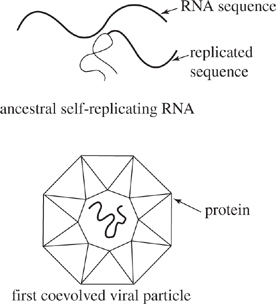
Figure 1
Cellular Origin Hypothesis
Some biologists claim that nucleotide sequences within prokaryotic (non-nucleated) and eukaryotic (nucleated) cellular organisms incorporated into a protein coating and escaped from the cell as a viral particle. Initially, DNA or RNA nucleotide sequences gained the code required for other cells to replicate them. Next, these sequences associated with proteins to form an outer capsid. Finally, the virion (viral particle) became capable of passing through the cell membrane and infecting other cells where it could be replicated. After the initial escape, viruses evolved independently from their initial host and ultimately could infect either prokaryotic or eukaryotic cells.
Regressive Evolution Hypothesis
An alternative explanation of viral origin is that viruses evolved from cellular organisms. Some cellular organisms, particularly certain bacteria, are obligate intracellular parasites because they must infect a host cell in order to reproduce. Regressive evolution suggests that some bacterial parasites gradually lost the structures required for survival outside of a cell. The result was a virus particle containing only nucleotides, a capsid (protein coating), and at times an outer membrane or envelope. This would account readily for viruses that contain complex deoxyribonucleic acid (DNA) similar to that found in bacteria and other cellular organisms (see Figure 2).
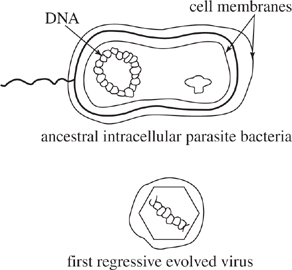
Figure 2
The development of which of the following is addressed in the passage by the Coevolution Hypothesis, but NOT by the Regressive Evolution Hypothesis?
Self-replication
Capsid
Deoxyribonucleic acid
Cell membrane transit
Supporters of all of the theories presented in the passage would agree with the conclusion that the first viruses:
evolved from bacteria.
could self-replicate outside a cell.
were enclosed within a membrane.
contained nucleic acid.
The Coevolution Hypothesis does NOT provide an explanation for the earliest virus particles possessing:
protein.
enzyme-like activity.
nucleotides.
DN
If the Cellular Origin Hypothesis is correct, which of the following conclusions can be made about modern T4 DNA viruses, which infect Escherichia coli bacteria, and modern PP7 RNA viruses, which infect Pseudomonas aeruginosa bacteria?
T4 and PP7 are more closely related to each other than to bacteria genetically.
T4 and PP7 are only distantly related genetically through a cellular organism.
T4 and PP7 both evolved from prokaryotic organisms.
T4 and PP7 both evolved from eukaryotic organisms.
The discovery of which of the following living organisms would provide the most support for the Regressive Evolution Hypothesis?
Extracellular parasites with DNA resembling a known virus
Extracellular parasites with unique RNA nucleotide sequences
Intracellular parasites with DNA resembling a known virus
Intracellular parasites with unique RNA nucleotide sequences
Supporters of all the theories presented would agree with which of the following conclusions about the origin of viruses?
Viral capsids contain a protein structure similar to the cell walls of modern bacteria.
The first viruses did not originate before the first cellular organisms.
RNA viruses are more advanced than DNA viruses.
The first virus contained DNA and was surrounded by an envelope similar to a cell membrane.
Which of the following questions is raised by the Coevolution Hypothesis, but is NOT answered in the passage?
Why were some RNA sequences packaged into protein structures and others incorporated into cell structures?
Why did obligate intracellular parasites lose their ability to survive outside of cells?
How could two different types of cellular organisms account for the origin of viruses?
How did virions develop the ability to pass through the cell membrane out of the cell?
Wind causes topsoil deflation, a type of erosion that is affected by plant and organic cover as well as water content of the soil. Scientists performed 2 experiments using equal-sized fields containing the same volume of soil. The soil samples were primarily a mixture of sand and silt, but differed in the percentage of clay they contained. Soil X was composed of 5% clay and soil Y was composed of 40% clay. Large fans were used to simulate wind. Topsoil deflation was measured in kilograms per hectare (kg/ha) following 10 hours of wind.
Experiment 1
A mixture of compost and straw was used to represent plant and organic cover. The percentage of soil covered with the mixture was considered to approximate an equivalent percentage of natural vegetative cover. One field remained uncovered, and the other fields were covered with different percentages of compost and straw. The topsoil deflation from each field was recorded in Table 1.
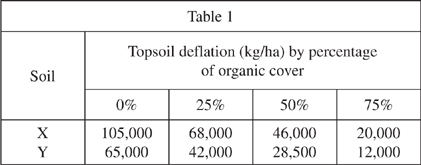
Experiment 2
Rainfall was simulated using a sprinkler system. Sprinklers were turned on for either 4 hours or 8 hours for fields of each kind of soil. Two additional fields composed of each type of soil were left unwatered. Afterward, soil samples were taken from all of the fields to determine their water content percentage, which was recorded in Table 2. Wind was applied as in Experiment 1 and topsoil deflation for all fields was recorded in Table 3.
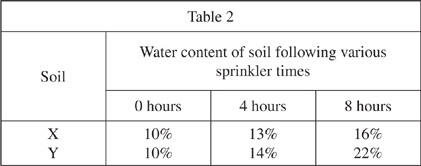

According to the results of Experiments 1 and 2, topsoil deflation will be minimized by:
decreased organic cover, increased amount of rainfall, and the use of either Soil X or Y as topsoil.
decreased organic cover, decreased amount of rainfall, and the use of Soil Y as topsoil.
increased organic cover, increased amount of rainfall, and the use of Soil Y as topsoil.
increased organic cover, increased amount of rainfall, and the use of Soil X as topsoil.
If Experiment 1 were repeated using a soil containing 10% clay with 0% organic cover, which of the following would be the most likely topsoil deflation amount?
110,200 kg/ha
99,800 kg/ha
70,700 kg/ha
60,200 kg/ha
To further investigate the effect of water content on erosion from topsoil deflation, the scientists should repeat Experiment:
1, using a different type of topsoil.
1, using plastic covers over the fields.
2, using no sprinklers.
2, using fields exposed to various amounts of rainfall.
What assumption in experimental design is most important to consider when applying the findings of Experiment 1 to a practical situation?
The quantity of topsoil deflation is independent of the percentage of clay present in the soil.
The presence of straw on the soil does not accurately simulate vegetation and organic cover.
Air movement from fans provides an accurate simulation of the wind responsible for topsoil deflation.
Compost is more effective than water content in the prevention of topsoil erosion.
In Experiment 2, the water content in the two soil types was similar after 4 hours of sprinkling, yet the topsoil deflation was significantly different. Which of the following statements provides the best explanation for these findings?
Topsoil erosion is independent of the water content found in the soil.
Fields are susceptible to topsoil deflation only when water completely evaporates from the topsoil.
Soil with a lower percentage of clay is more prone to erosion from topsoil deflation than one with a higher percentage of clay.
Water is trapped in the topsoil by wind and this increases the rate of topsoil deflation.
If Experiment 2 were repeated with soil containing 10% clay, which of the following values would be expected for water content and topsoil deflation in a field following 8 hours of water sprinkling?
water content of 17%; topsoil deflation of 13,400 kg/ha
water content of 21%; topsoil deflation of 9,700 kg/ha
water content of 15%; topsoil deflation of 10,900 kg/ha
water content of 14%; topsoil deflation of 101,000 kg/ha
Đề thi tương tự
1 mã đề 23 câu hỏi 1 giờ
195,966 xem15,070 thi
